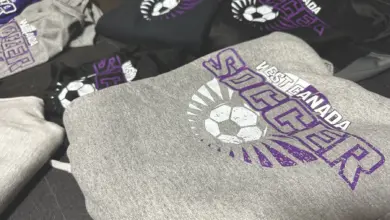When running a small business, we need to take advantage of the technology and techniques that will help increase efficiency while still providing quality products to our customers. In the decorated garment industry, transfers are one way to increase efficiency while still serving customers. Today’s heat transfers and transfer machines are evolving to keep up with changes in fabrics.
The most popular heat-transfer types used by garment decorators include cold-peel plastisol, hot-peel or hot-split plastisol, heat transfers for performance-wear, CAD-CUT heat transfers, sublimation transfers, water-based transfers, and silicone transfers.
In general, screen-printed transfers are the inverse image printed on specialized transfer paper. The ink on the paper is partially cured, and then placed on a substrate facedown against the fabric and heated with pressure using a transfer machine for a given time frame. After release, the paper is peeled away, leaving the cured image behind on the garment. While heat transfers don’t replace many screen printing applications, heat transfers are ideal for locations that are otherwise difficult to print and are handy for small runs and/or specialized fabrics. Heat transfers can be shelved and applied to individual products as orders come in or on-demand at events.
To screen print heat transfers there are a few differences from direct screen printing. All rules still apply and it is a process, which means we are only as strong as the weakest link within it. The screen will require a slightly thicker stencil to control ink deposit. A higher off-contact distance is usually required at press. If only dabbling to secure the transfer paper to the platen, a light adhesive may be used. However, higher volume will require vacuum platens. For multi-color transfers we print in reverse, finishing with the white printer or base. Each color must be gelled between but not cured as we cannot print wet-on-wet. Finally, the full transfer is partially cured (gelled). This is most critical.
Choose a heat transfer press that allows you to split the garment over the lower pallet. Use a Teflon protector on the lower pad and upper heat element and preheat the platen. Try to gently release the heating element for a clean final image. Always pre-press the fabric and test, test, test, checking the heat element temperature often.
Today, if properly printed, gelled, and transferred, heat transfers can be nearly as durable as a direct print. And then, of course, we can purchase custom or preprinted transfers from companies that specialize in transfers for our specialty applications…my favorite course of action.
—GraphicElephants.com




